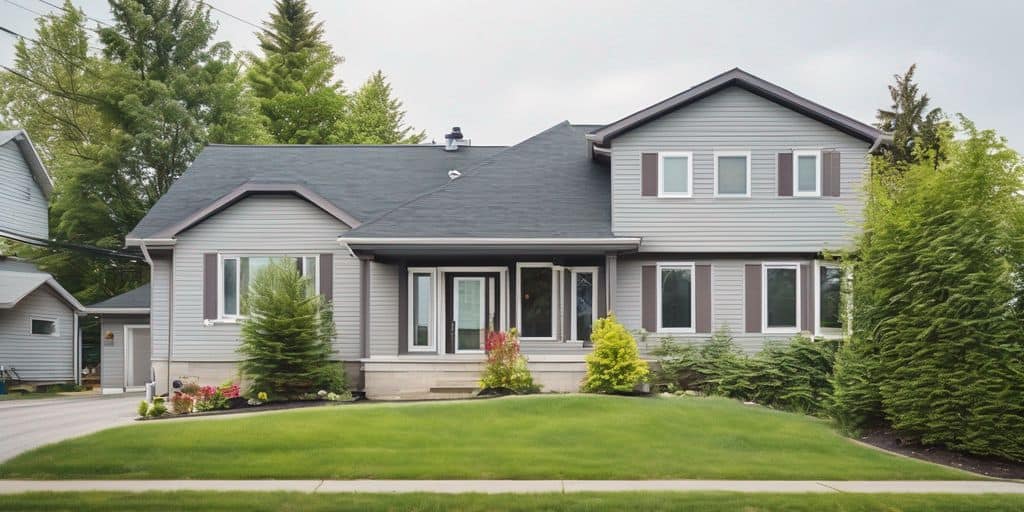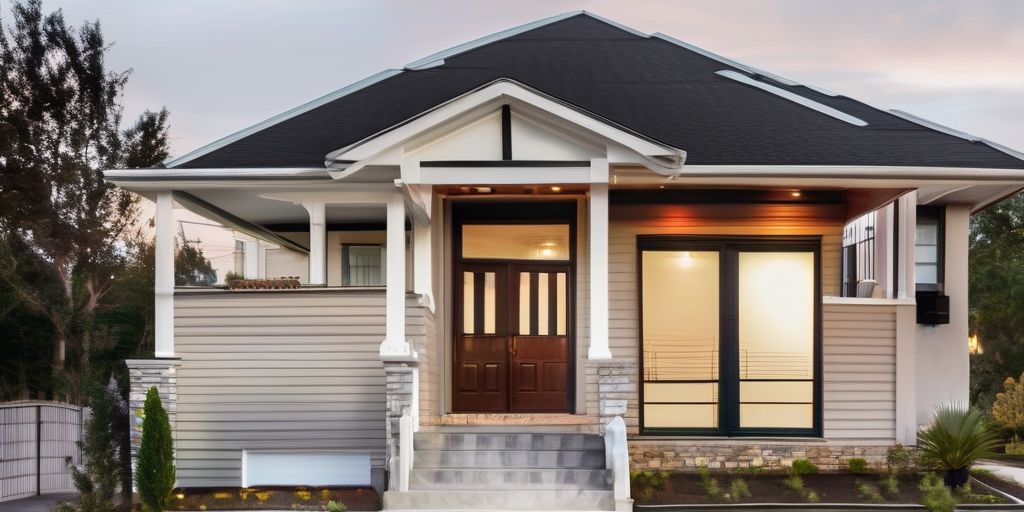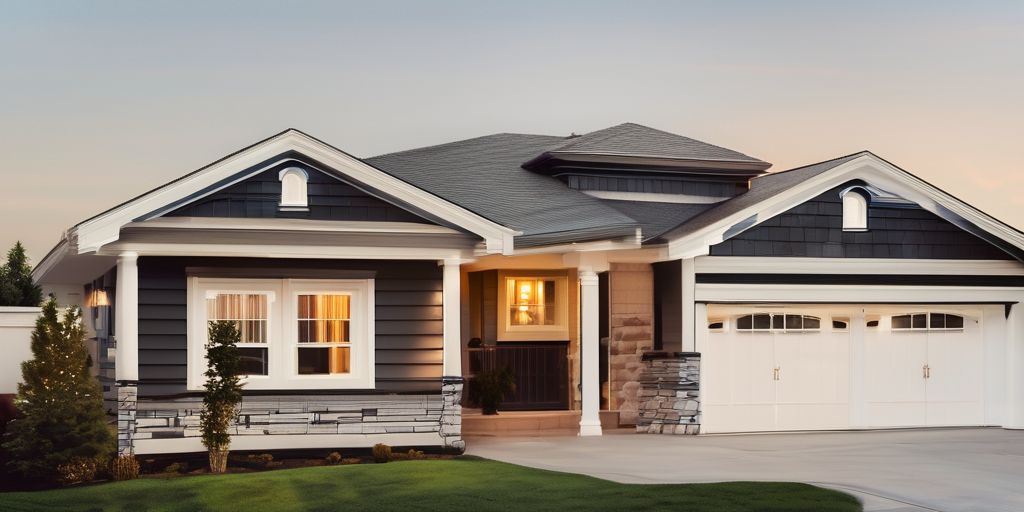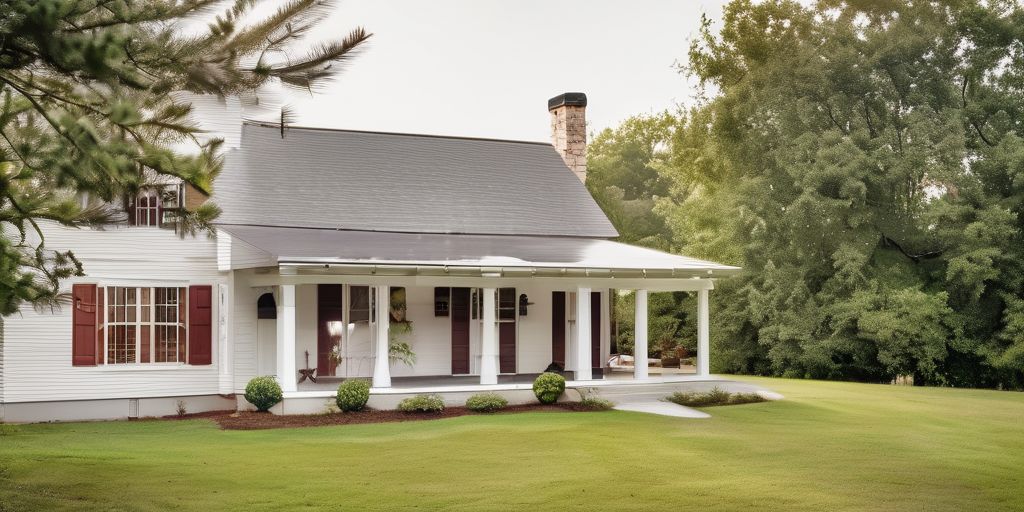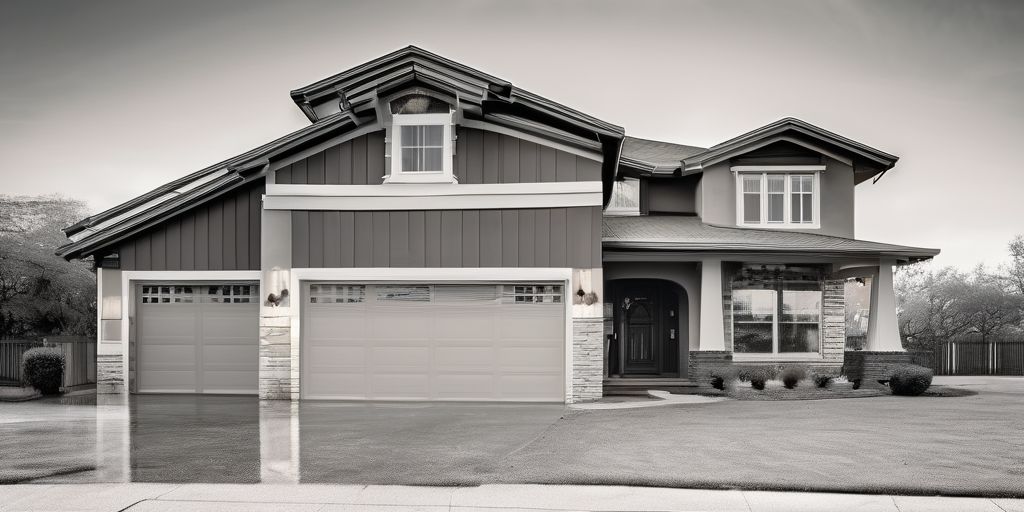Spray painting outdoors can be both fun and rewarding, especially in a beautiful place like Brantford. Whether you’re a beginner or have some experience, knowing the right techniques and tools can make your project look professional. This guide will walk you through everything you need to know about outdoor spray painting, from choosing the right equipment to dealing with the weather.
Key Takeaways
- Choosing the right spray painting equipment is essential for a smooth and professional finish.
- Proper surface preparation, including cleaning and sanding, can make a big difference in the final result.
- Mastering different spray painting techniques helps in achieving even coats and unique textures.
- Weather conditions in Brantford, like temperature and humidity, can affect your spray painting project.
- Safety gear and proper ventilation are crucial for a safe and successful spray painting experience.
Choosing the Right Equipment for Outdoor Spray Painting
When it comes to outdoor spray painting, having the right equipment is crucial for achieving a professional finish. Here are some key considerations to keep in mind:
Types of Spray Guns
Spray guns come in various types, each suited for different tasks. The main types include:
- Airless Spray Guns: Ideal for large surfaces and thick coatings.
- HVLP (High Volume Low Pressure) Spray Guns: Best for detailed work and fine finishes.
- Compressed Air Spray Guns: Versatile and commonly used for a variety of projects.
Choosing the right sprayer for your project can make a significant difference in the quality of your work.
Selecting the Appropriate Nozzles
Nozzles play a vital role in determining the spray pattern and paint flow. Here are some tips for selecting the right nozzles:
- Size Matters: Larger nozzles are suitable for thicker paints, while smaller nozzles are better for thin coatings.
- Adjustable Nozzles: These offer flexibility and can be adjusted to achieve different spray patterns.
Importance of Air Compressors
Air compressors are essential for powering certain types of spray guns. When selecting an air compressor, consider the following:
- Capacity: Ensure the compressor can handle the demands of your spray gun.
- Portability: If you need to move around a lot, a portable compressor is a good choice.
- Noise Level: Some compressors can be quite loud, so consider the noise level if you’re working in a residential area.
Having the right equipment not only makes the job easier but also ensures a smooth and even coat of paint, helping you cover large areas efficiently.
Preparing Your Surface for Spray Painting
Cleaning and Sanding Techniques
Before you start spray painting, it’s essential to clean and sand the surface properly. This ensures the paint adheres well and lasts longer. Here are some steps to follow:
- Clean the surface: Remove any dirt, grease, or rust. For metal surfaces, you might need a water-dampened rag to remove stubborn crud.
- Sand the surface: Use sandpaper to smooth out any rough areas. This helps the paint stick better.
- Wipe thoroughly: After sanding, wipe the surface with a clean, dry cloth to remove any dust and debris.
Remember, spray lightly across the surface. Do not aim for total color coverage at this point, as that will usually lead to drips.
Priming the Surface
Priming is a crucial step in spray painting. It helps the paint adhere better and provides a uniform base. Follow these steps:
- Choose the right primer for your surface.
- Apply the primer evenly, ensuring full coverage.
- Allow the primer to dry completely before moving on to painting.
Masking and Protecting Surrounding Areas
To avoid getting paint on areas you don’t want to be painted, it’s important to mask and protect the surrounding areas. Here’s how:
- Use painter’s tape to cover edges and trim.
- Cover larger areas with plastic sheeting or drop cloths.
- Ensure all items you don’t want to be painted are either removed or covered.
In Brantford, where landmarks like the Bell Homestead National Historic Site are well-preserved, the same level of care should be taken when preparing surfaces for painting.
By following these steps, you’ll ensure a smooth and professional finish for your spray painting project.
Mastering Spray Painting Techniques
Achieving Even Coats
To get a smooth, professional-looking finish, it’s crucial to apply even coats of paint. Here are some tips:
- Maintain a consistent distance from the surface, usually about 6-12 inches.
- Move the spray gun in a steady, sweeping motion.
- Overlap each pass by about 50% to avoid streaks and missed spots.
- Apply multiple thin coats rather than one thick coat to prevent drips and runs.
Layering for Depth and Texture
Layering paint can add depth and texture to your project. Follow these steps:
- Start with a base coat and let it dry completely.
- Apply subsequent layers, allowing each to dry before adding the next.
- Use different colors or shades to create a more dynamic look.
- Experiment with techniques like sponging or splattering for unique textures.
Mastering proper spray painting techniques will help you achieve a smooth, professional-looking finish on your wood furniture.
Handling Different Materials
Different materials require different approaches. Here’s a quick guide:
- Wood: Sand the surface smooth and use a primer designed for wood.
- Metal: Clean thoroughly to remove rust and use a rust-inhibiting primer.
- Plastic: Use a primer specifically formulated for plastic surfaces.
In Brantford, the proximity to the Grand River provides a serene backdrop for artists who draw inspiration from the natural beauty. This can influence the creative process and, ultimately, the art itself.
Weather Considerations for Outdoor Spray Painting in Brantford
Ideal Temperature and Humidity
When planning an outdoor spray painting project, it’s crucial to consider the weather. Ideal conditions for spray painting are typically between 50-80 degrees Fahrenheit. High temperatures can cause the paint to dry too quickly, while low temperatures can prevent it from adhering properly.
Humidity also plays a significant role. Aim for a relative humidity between 40-50%. High humidity can cause the paint to dry slowly and may lead to a patchy finish.
In Brantford, where weather can be unpredictable, monitoring these conditions is crucial for maintaining the integrity of your work.
Timing Your Project
Adjusting your schedule to paint during the most suitable weather conditions can make a significant difference in the final outcome. Here are some tips:
- Check the forecast: Always check the weather forecast before starting your project.
- Plan for mornings: Early mornings are often the best time to paint as temperatures are cooler and humidity levels are lower.
- Avoid windy days: Wind can blow debris onto your wet paint, ruining the finish.
Dealing with Unexpected Weather Changes
Weather in Brantford can change rapidly, so it’s essential to be prepared for unexpected conditions. Here are some strategies:
- Have a backup plan: If the weather turns bad, be ready to cover your work and move your equipment to a sheltered area.
- Use quick-drying paint: This can help mitigate the effects of sudden weather changes.
- Stay flexible: Be prepared to adjust your schedule as needed to accommodate the weather.
By considering these weather factors, you can ensure a smoother and more successful outdoor spray painting project in Brantford.
Safety Tips for Outdoor Spray Painting
When engaging in spray painting, it’s crucial to prioritize safety. Proper protective gear is not just a recommendation; it’s a necessity to ensure a safe and successful project. Here’s a list of essential safety items you should always have on hand:
- Safety glasses or goggles to protect your eyes from harmful overspray and debris.
- Respiratory protection, such as a respirator, to guard against inhaling toxic fumes.
- Durable gloves, preferably those that resist solvents, to keep your hands safe from chemicals and paint.
- Protective clothing, like coveralls, to shield your skin and clothes from paint splatters.
- Steel-toe boots to protect your feet from heavy objects and spills.
Familiarize yourself with equipment and follow safety guidelines for a successful project.
While not equipment per se, proper ventilation is also critical to maintain a safe breathing environment. Whether you’re working in a professional spray booth or a makeshift area, ensuring that there’s adequate airflow can greatly reduce the risk of inhaling hazardous substances. If you’re spray painting near Brantford’s Grand River, remember to respect the natural environment by preventing any paint from contaminating the water.
Essential Safety Gear
When engaging in spray painting, it’s crucial to prioritize safety. Proper protective gear is not just a recommendation; it’s a necessity to ensure a safe and successful project. Here’s a list of essential safety items you should always have on hand:
- Safety glasses or goggles to protect your eyes from harmful overspray and debris.
- Respiratory protection, such as a respirator, to guard against inhaling toxic fumes.
- Durable gloves, preferably those that resist solvents, to keep your hands safe from chemicals and paint.
- Protective clothing, like coveralls, to shield your skin and clothes from paint splatters.
- Steel-toe boots to protect your feet from heavy objects and spills.
Familiarize yourself with equipment and follow safety guidelines for a successful project.
Proper Ventilation
While not equipment per se, proper ventilation is also critical to maintain a safe breathing environment. Whether you’re working in a professional spray booth or a makeshift area, ensuring that there’s adequate airflow can greatly reduce the risk of inhaling hazardous substances. If you’re spray painting near Brantford’s Grand River, remember to respect the natural environment by preventing any paint from contaminating the water.
Handling Paints and Solvents Safely
Handling paints and solvents safely is essential to avoid accidents and health risks. Here are some tips:
- Always read and follow the manufacturer’s instructions on the labels.
- Store paints and solvents in a cool, dry place away from direct sunlight and heat sources.
- Use appropriate containers for mixing and storing chemicals to prevent leaks and spills.
- Dispose of any waste materials according to local regulations to protect the environment.
It’s essential to mix in a well-ventilated area to avoid inhaling fumes, and always wear the appropriate safety gear.
Remember to clean your equipment immediately after use to prevent the paint from hardening and causing future problems. With these steps, you’ll be ready to spray paint with confidence, whether you’re working on a project in your garage or tackling a larger job in Brantford, where the Grand River adds a picturesque backdrop to many outdoor painting projects.
Maintaining and Troubleshooting Your Spray Painting Equipment
Regular Cleaning and Maintenance
Keeping your spray painting equipment in top shape is crucial for achieving a smooth and even finish. Here are some essential tips:
- Inspect your spray guns and hoses for any signs of wear or damage before each use.
- Clean all parts thoroughly after use, especially the nozzle and filter, to remove any residual paint.
- Use the appropriate thinner or solvent for cleaning, as specified by the equipment manufacturer.
- Lubricate moving parts to reduce friction and prevent corrosion.
Proper maintenance not only extends the life of your equipment but also guarantees the quality of your paint job.
Common Equipment Issues and Fixes
Even with regular maintenance, you might encounter some common issues. Here’s how to handle them:
- Clogs: Disconnect the spray gun from the power source, dismantle it, and soak the affected parts in the recommended cleaning solution. Use a soft brush to gently remove the clog.
- Inconsistent Spray Patterns: Check the paint viscosity and adjust it according to the manufacturer’s recommendations. Ensure the air pressure is set correctly for the type of paint you’re using.
- Leaks: Ensure all connections are secure and there are no leaks in the air or paint lines.
It’s important to address clogs promptly to maintain the quality of your work and extend the life of your equipment.
When to Seek Professional Help
Sometimes, despite your best efforts, you might need professional assistance. Here are some signs that it’s time to call in the experts:
- Persistent clogs or inconsistent spray patterns that you can’t resolve.
- Significant wear or damage to key components of your spray gun.
- If your equipment is not performing as expected despite regular maintenance.
In Brantford, where local weather conditions can affect painting projects, it’s particularly important to keep equipment in top shape. For instance, during the humid summer months, extra attention should be given to preventing rust and corrosion. By following a maintenance schedule, you can avoid unexpected equipment failures and downtime.
Finding Quality Spray Painting Services in Brantford
Researching Local Experts
When looking for quality spray painting services in Brantford, start by researching local experts. Check online directories and community boards for recommendations. You can also ask friends and family for referrals. Look for professionals who specialize in the type of spray painting you need, whether it’s for your home, business, or a specific project.
Reading Client Testimonials
Client testimonials are a great way to gauge the quality of a spray painting service. Look for reviews on their website or on third-party review sites. Pay attention to comments about their professionalism, quality of work, and customer service. Positive feedback from previous clients can give you confidence in your choice.
Evaluating Service Packages
Different spray painting services offer various packages. Compare these packages to see which one best fits your needs and budget. Consider what is included in the package, such as preparation work, materials, and cleanup. A comprehensive package can save you time and hassle in the long run.
Taking the time to research and evaluate your options can help you find the best spray painting service in Brantford. This ensures you get high-quality results that meet your expectations.
If you’re near the Brantford Twin Valley Zoo, you might find some local experts who have experience with outdoor projects in that area.
Conclusion
Mastering the art of outdoor spray painting in Brantford is a rewarding journey. With the right tools, techniques, and a bit of practice, you can transform any outdoor space into a vibrant masterpiece. Whether you’re a beginner or a seasoned pro, the key is to stay patient and enjoy the process. Remember, every stroke of paint brings you one step closer to creating something truly special. So, grab your spray gun, head outside, and let your creativity flow. Happy painting!
Frequently Asked Questions
What kind of safety gear do I need for spray painting?
You’ll need a mask to protect yourself from fumes, goggles for your eyes, gloves for your hands, and clothes that cover your skin. Also, make sure your work area has good air flow.
How do I get a surface ready for spray painting?
First, clean the surface to get rid of dirt and grease. Then, sand it to make it smooth. Finally, make sure the area is free from dust before you start painting.
What advanced tools can help with spray painting?
There are many advanced tools like automated spray systems that make the job faster and more even. Some tools also have special features to help you get a better finish.
How do I pick a good spray painting equipment supplier in Brantford?
Look for a supplier with good quality products and great customer service. Reading reviews and asking for recommendations can also help you find a reliable supplier.
What should I do if my spray painting equipment stops working?
First, check for obvious problems like worn-out parts or loose connections. Clean the spray gun, especially the nozzle. If the problem continues, you might need to get it fixed by a professional.
When is the best time to do outdoor spray painting in Brantford?
The best time is when the temperature is between 50-80°F and the humidity is low. Always check the weather forecast to avoid rain or strong winds.

